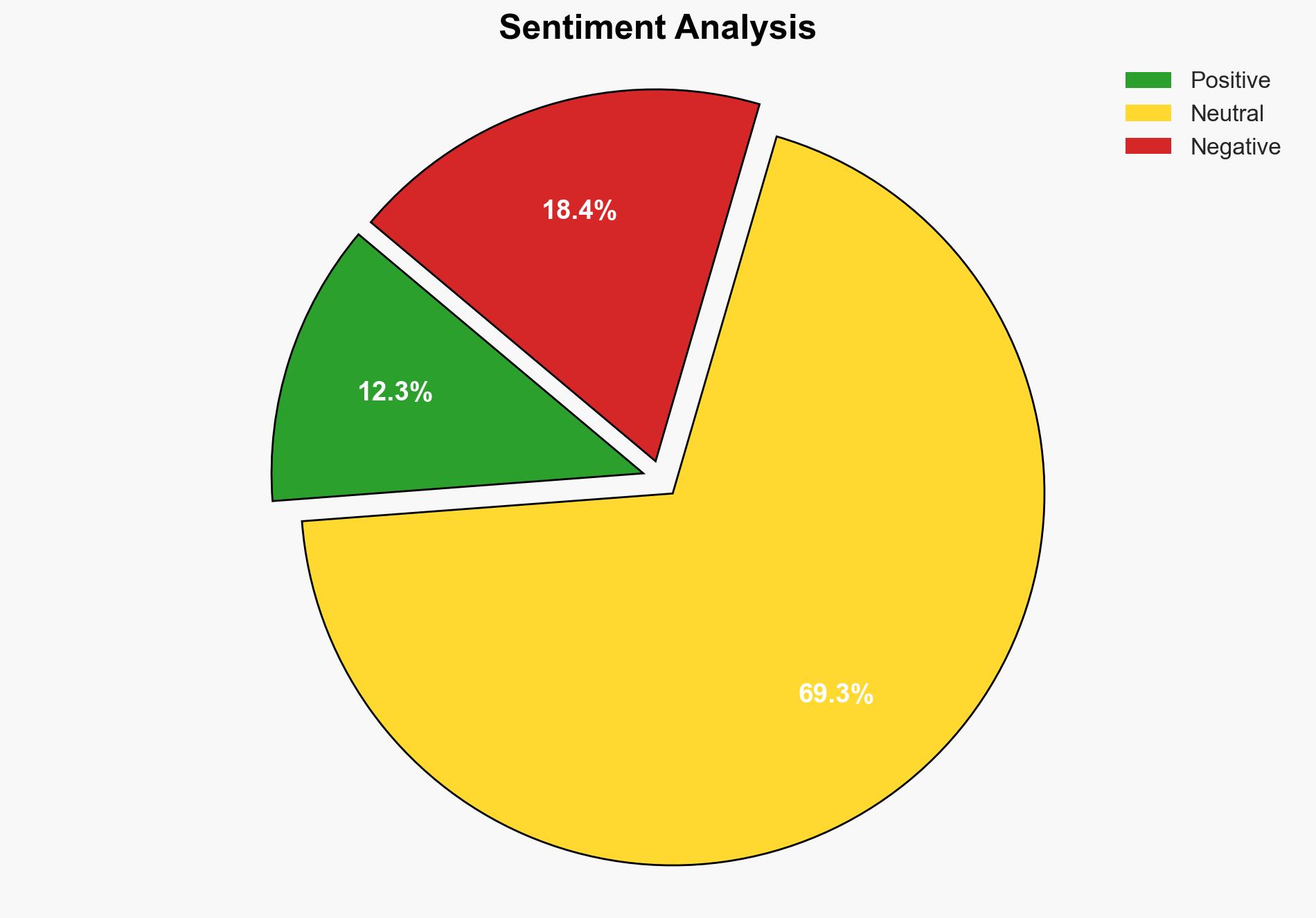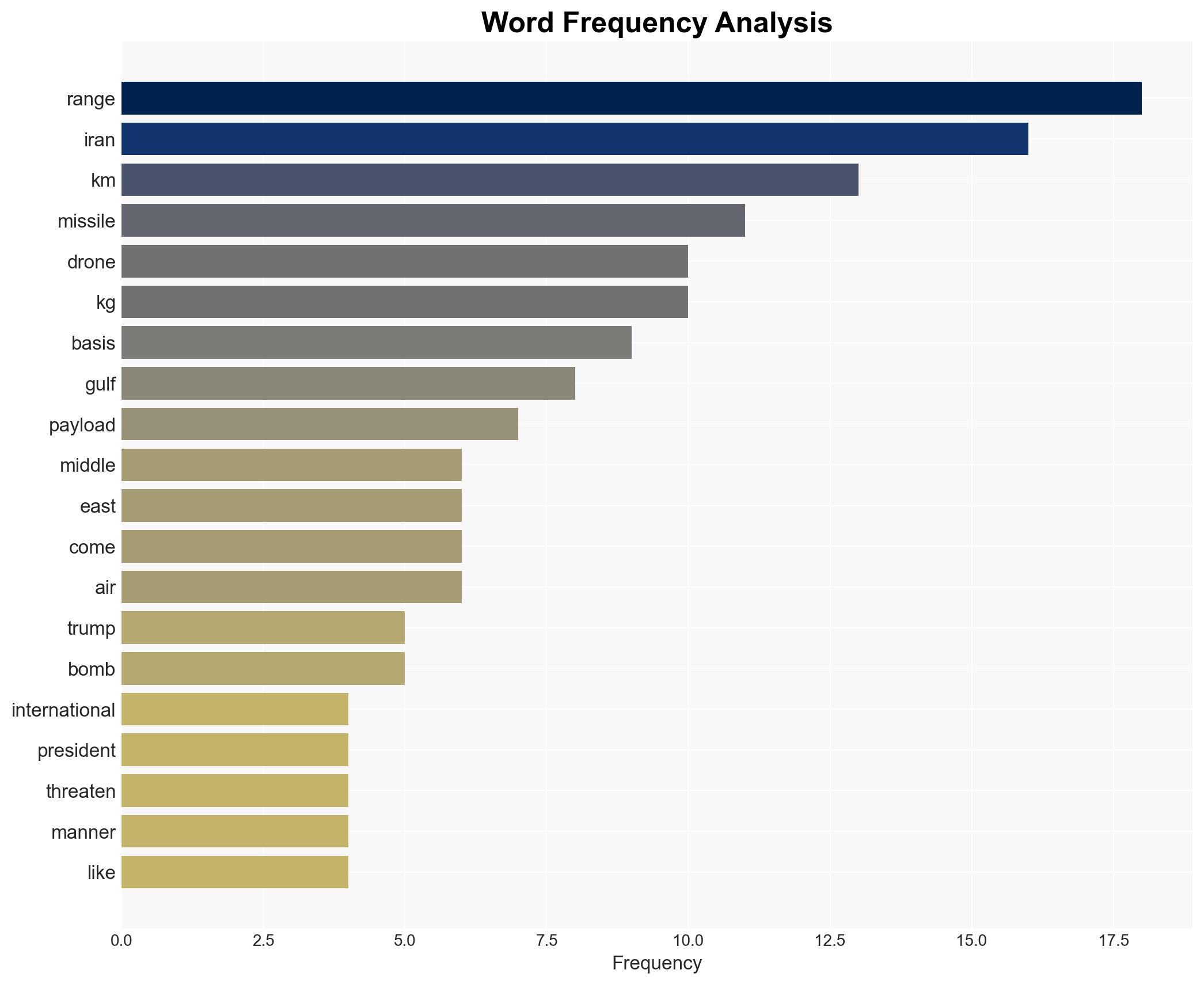Which Iranian Missiles and Drones Can Wipe US Bases in the Middle East Off the Map – Sputnikglobe.com
Published on: 2025-04-01
Intelligence Report: Which Iranian Missiles and Drones Can Wipe US Bases in the Middle East Off the Map – Sputnikglobe.com
1. BLUF (Bottom Line Up Front)
The report evaluates the potential threat posed by Iranian missile and drone capabilities to US military bases in the Middle East. Key findings indicate that Iran possesses a range of ballistic and cruise missiles, as well as drones, capable of targeting US installations. The strategic geographical position of Iran enhances its ability to control critical maritime chokepoints, such as the Strait of Hormuz. Recommendations include enhancing missile defense systems and diplomatic efforts to mitigate escalation risks.
2. Detailed Analysis
The following structured analytic techniques have been applied for this analysis:
General Analysis
Iran’s missile arsenal includes several long-range ballistic missiles such as the Qiam, Haj Qasem, and Kheibar Shekan, with ranges up to 2,000 km and payload capacities up to 1,800 kg. The presence of cruise missiles like the Soumar and drones such as the Shahed series further expands Iran’s strike capabilities. The geographical advantage of Iran, with its access to the Persian Gulf and the Gulf of Oman, allows for strategic control over the Strait of Hormuz. The Zagros mountain range provides natural protection for Iran’s missile bases, complicating potential counter-strikes.
3. Implications and Strategic Risks
The primary risk involves the potential for military escalation in the Middle East, threatening regional stability and global oil markets. The ability of Iranian missiles and drones to reach US bases in Bahrain, Saudi Arabia, and other locations poses a direct threat to US military personnel and assets. Economic interests are also at risk, given the strategic importance of the Strait of Hormuz for global oil trade.
4. Recommendations and Outlook
Recommendations:
- Enhance missile defense systems at key US installations in the Middle East to mitigate the threat of Iranian strikes.
- Strengthen diplomatic channels with Iran to reduce tensions and prevent potential military conflicts.
- Consider technological advancements in drone detection and neutralization to counter Iranian drone capabilities.
Outlook:
In the best-case scenario, diplomatic efforts lead to de-escalation and a new agreement limiting Iran’s missile capabilities. The worst-case scenario involves a military confrontation that disrupts regional stability and global oil supplies. The most likely outcome is continued tension with sporadic incidents, necessitating ongoing vigilance and preparedness.
5. Key Individuals and Entities
The report mentions significant individuals such as Donald Trump and entities like Central Command and Sputnik International. These references are crucial for understanding the geopolitical context and the sources of information.





